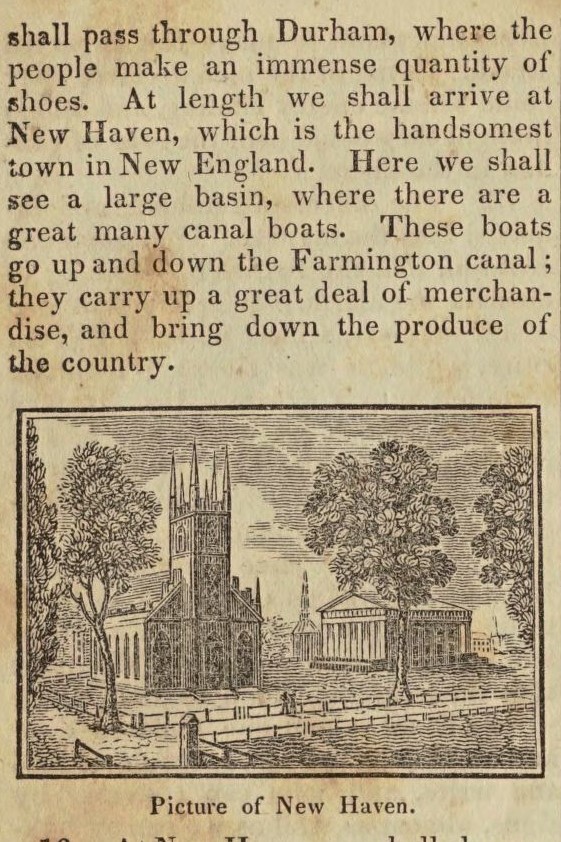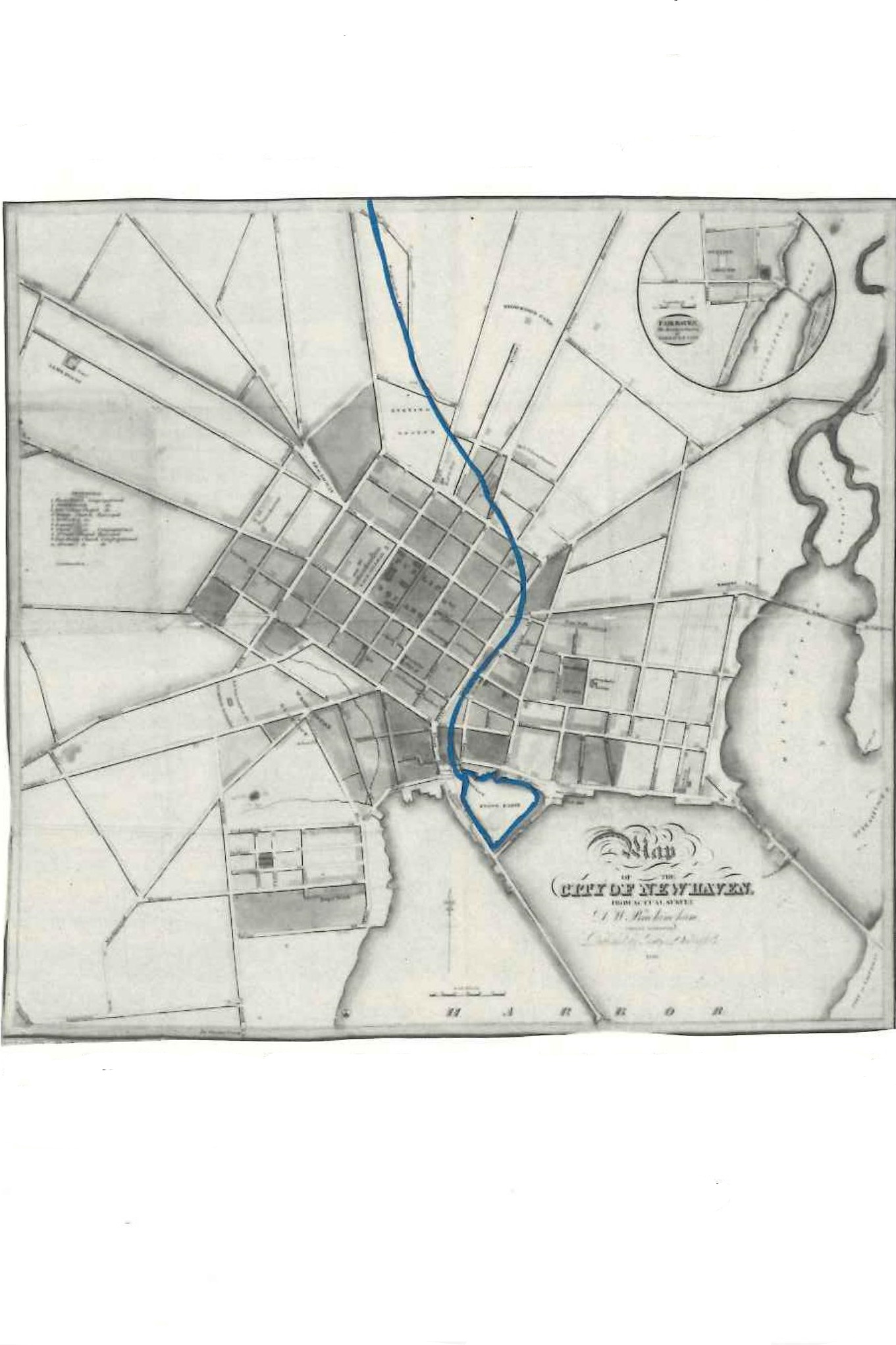Hillhouse basin (1828)
The Farmington Canal opened to great fanfare in the spring of 1828. Already five years in the making, the canal was intended to improve the transportation of goods between the harbor and the interior of the state, ultimately meeting up with the planned Hampshire and Hampden Canal in the north (completed in 1835) to connect New Haven to Northampton, Massachusetts. Eventually, the planners of the two canals hoped to stitch together a water route stretching all the way through Vermont to the St. Lawrence Seaway in Canada.
In the first year of the canal, it was navigated mostly by “packet boats” designed for pleasure travel. Upper class New Haveners would travel up the canal for day or weekend excursions to towns in the interior of the state. These ships launched from a boathouse known as Hillhouse Basin or “Hillhouse’s Basin,” conveniently located across from the local canal repair shop. Well dressed passengers would sit on the boats’ roofs, watching the scenery glide by at the frantic pace of 2.5 miles per hour.


The boathouse was named after James Hillhouse (1754-1832), the first President and Superintendent of the Farmington Canal Company. Hillhouse, whose name also adorned the first boat to launch on the canal, was a prominent local figure: A former Congressman and Senator, he had also played a major role in the clearing of the New Haven Green and the construction of nearby Grove Street Cemetery. Much of the hard work of digging the canal itself, along with the large canal basin in Long Wharf Harbor, was done by Irish and African American laborers -- who sometimes had to endure being paid late or not at all by the struggling canal company.